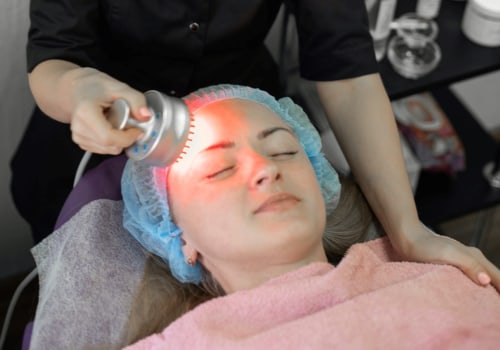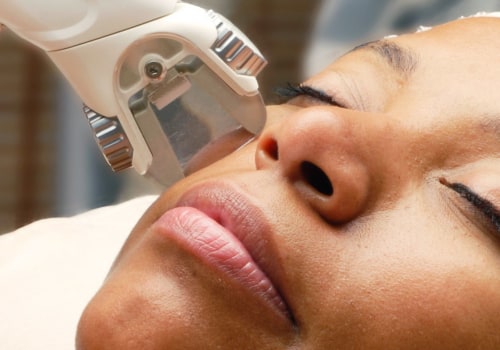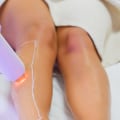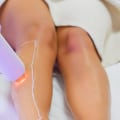During laser hair removal, the laser emits a light that is absorbed by the pigment (melanin) in the hair. Light energy is converted to heat, which damages the tube-like sacs inside the skin (hair follicles) that produce hairs. This damage inhibits or delays future hair growth. If you're not satisfied with shaving, waxing, or waxing to remove unwanted hair, laser hair removal may be an option worth considering.
Lasers are useful for removing unwanted hair from the face, leg, chin, back, arm, armpits, bikini line, and other areas. Lasers can selectively target dark and rough hairs while leaving the surrounding skin intact. Each laser pulse takes a fraction of a second and can treat many hairs at the same time. The laser can treat an area approximately the size of a quarter per second.
Small areas, such as the upper lip, can be treated in less than a minute, and large areas, such as the back or legs, can take up to an hour. Most patients have permanent hair loss after an average of three to seven sessions. Laser hair removal is more than just “removing” unwanted hair. It is a medical procedure that requires training to perform it and carries potential risks.
Before having laser hair removal, you should thoroughly check the credentials of the doctor or technician performing the procedure. If you plan to undergo laser hair removal, you should limit hair removal, waxing and electrolysis for six weeks prior to treatment. This is because the laser targets the roots of the hair, which are temporarily removed with wax or by waxing. You should also avoid sun exposure for six weeks before and after treatment.
Sun exposure makes laser hair removal less effective and increases the likelihood of complications after treatment. Depending on the laser or light source being used, you and the technician should use appropriate eye protection. It will also be necessary to protect the outer layers of the skin with a cold gel or a special cooling device. This will help the laser light penetrate the skin. Sun exposure makes laser hair removal less effective and increases the likelihood of complications after treatment. Depending on the laser or light source being used, you and the technician should use appropriate eye protection. It will also be necessary to protect the outer layers of the skin with a cold gel or a special cooling device. This will help the laser light penetrate the skin.
When the procedure is complete, you may be given ice packs, anti-inflammatory creams or lotions, or cold water to relieve any discomfort. You can schedule your next treatment four to six weeks later. You will receive treatments until your hair stops growing. For a day or two afterwards, the treated area of skin will look and feel like it has been sunburned.
Cold packs and moisturizers can help. If your face was treated, you can wear makeup the next day, unless your skin blisters. During the following month, treated hair will fall out. Use sunscreen for the next month to help prevent temporary changes in the color of treated skin.
Blisters are rare, but are more likely in people with darker complexions. Other possible side effects include swelling, redness, and scarring. Permanent scarring or changes in skin color are rare. Request a consultation to get a better idea of the cost of your particular case.
The Benefits of Coconut, Argan, Tea Tree, and More. Tips to Help Save Skin from Damage. WebMD does not provide medical advice, diagnosis, or treatment. Laser hair removal is a sophisticated and precisely tuned procedure performed with the use of a laser.
These specific lasers are designed to eliminate the growth center at the base of the hair follicle. The laser emits a gentle beam of light that passes through the skin to the hair follicle, where light from the laser is absorbed. After absorption, laser energy is transformed into heat, which can destroy the follicle. A laser removes hair by vaporizing it.
This causes small plumes of smoke that have a sulfur-like odor. However, it is important to know that laser hair removal is only effective for dark hair follicles that contain melanin. An active phase (growth), an intermediate phase (rest) in which no growth occurs but the hair is still visible, and a resting phase in which the hair is released from the follicle. The time between treatments depends on how quickly the hair grows in that area and the hair growth cycle at the time of the consultation.
When I read that 90 percent of laser hair removal patients who are good candidates for the procedure report permanent hair loss after an average of three to six sessions, I was sold. It is necessary to treat hair in an active growth phase to target the germination cells that produce hair in the follicle. Nowadays, laser hair removal is a treatment option for patients who have light hair and fair skin and patients who have dark skin. Laser hair removal is an effective FDA-approved treatment to remove unwanted hair from the body and face, revealing a smooth, stubble free surface.
Because not all hair follicles are in a growth phase at the same time, multiple sequential treatments are required for optimal hair reduction. Hair follicles are responsible for producing new strands of hair, so destroying them causes loss of hair follicle production. While there needs to be enough hair follicle to absorb the energy needed for hair removal, it should not be too long, as this can cause the laser to scatter too much or cause the hair to burn. .
.










